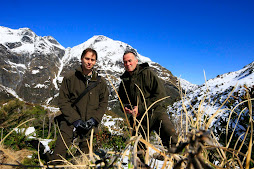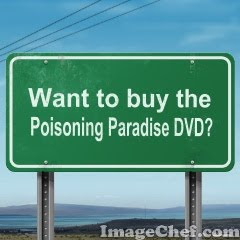There is still no reliable evidence to show that kiwi are benefiting, at a population level, from the use of aerially applied 1080 poison on the mainland.
Kiwi may, however, benefit from pest control using targeted trapping, and targeted ground control operations.
The following excerpts are from a 3 year study that observed the effects of brodifacoum poison, through the use of BAIT STATIONS (not aerially applied poison), on kiwi...
(ROBERTSON, COLBOURNE, GRAHAM, MILLER and PIERCE: KIWI SURVIVAL AND BRODIFACOUM)
"Kiwi chicks may be more vulnerable than adults to accidental poisoning if they have different physiology or behaviour; for instance, kiwi chicks are more liable to feed on novel food items (Tamsin Ward-Smith, Massey University, NZ, pers. comm.). With a short bill, chicks are restricted to feeding on surface-dwelling invertebrates and so may be more likely to come into contact with invertebrates feeding on baits that had fallen to the ground or been cached by rodents (rats or mice), and invertebrates feeding on possum and rodent carcasses on the ground. We had no evidence from our study to show that either rats or possums were killing kiwi chicks."
"We have shown that kiwi chicks are ingesting the toxin, even though the doses recorded are generally
below the levels affecting the physiology, behaviour or survival of the chicks concerned; however, one
chick had a higher level (0.18 mg kg-1) than the 0.12 mg kg-1 that was apparently fatal in a harrier
(Rammell et al. 1984)."
We now know (2010) that brodifacoum is terminating in kiwi chicks, eggs, and adult birds.
1080 bait looks the same, smells the same, and tastes the same as brodifacoum baits.
1080 is spread aerailly across New Zealand, whereas brodifacoum is only permitted in some areas on the mainland, in bait stations.
Therefore, aerially applied 1080 is far more accessible to kiwi, than brodifacoum presented in bait stations.
How is it that brodifacoum residues are found in kiwi, but 1080 is not (as we're told by the DoC), when the baits are practically the same, apart from the way they kill?
"If it is known that a species has eaten cereal-based baits containing brodifacoum, that information is included in this report to indicate that the species may eat cereal-based 1080 baits."
( E.B. Spurr and R.G. Powlesland 1997)
Brown kiwi (Apteryx australis) Brown kiwi are known to have eaten cereal-based baits (Pierce & Montgomery 1992),"
Brodifacoum accumulates in the body, whereas, we're informed, that non fatal doses of 1080 is metabolised.
However, it would be reasonable to assume that the 1080 is still entering the birds foodchain, (because it is allot more available to kiwi in aerial drops, than bait station operations using brodifacoum) and they are consuming the poison, but perhaps it is less possible to detect the poison, simply because it ends up being metabolised. Or perhaps we're not testing the birds to determine if they contain 1080 residues?
The question is - what harm is being done to the birds that receive this sub-lethal dose?
We do know that 1080 is a male reproductive toxin.
Is it probable that the repeated use of 1080 in our forests (every 3 years, in many areas) is having a detrimental effect on these birds long term breeding ability? Yes.
Is it possible that the damage done by 1080 intoxication, that is then metabolised, still kills the bird, even weeks down the track, but the residues are no longer detectable? Or perhaps the birds that die in aerial drops aren't being tested for residues, their deaths simply being attributed to predation?
For example, 14 kiwi recently died at Mt Bruce, in the Wairarapa.
1 bird in March, and 13 birds between the 05 July and August 12.
2 types of poison have been used in over 1100 bait stations across the reserve. A first generation anticoagulant was used earlier in the year.
The death of the birds where put down to predation by 2 stoats. These 2 stoats covered 950 hectares in less than 4 weeks, and killed 2 juvenile, and 11 adult kiwi. (one of the birds to die earlier, was too decomposed to determine cause of death)
DoC tell us that kiwi can defend themselves from a predator after reaching about 1.5kg in size. (about 18 months of age) The majority of birds killed at Mt Bruce were adult birds.
Only 5 kiwi in the last 15 years have been tested for 1080 residues. Including those from Mt Bruce.
One in 1998, one in 2001, one in 2008, and 2 in 2010.
(As of at 24th August 2010 (obtained under the Official Information Act - OIA request) It is not known if these 5 tested kiwi were from poison drop zones.
It seems
unreasonable to assume that 1080 is not terminating in kiwi (as the public are told by DoC), when so few of the birds that die are being tested. Surely, in a country that drops so much poison, one could expect that ALL kiwi found dead, whether thought to be scavenged, or predated on, should be tested for residues simply to understand where this poison is ending up.
We often find birds scavenged in poison drop zones. This does not mean they were predated on - simply that they have been scavenged on AFTER dying from 1080 poisoning.
At the moment, it seems, that there is a resistance to wanting to test birds for poison residues, to ensure poison residues are not realised.









